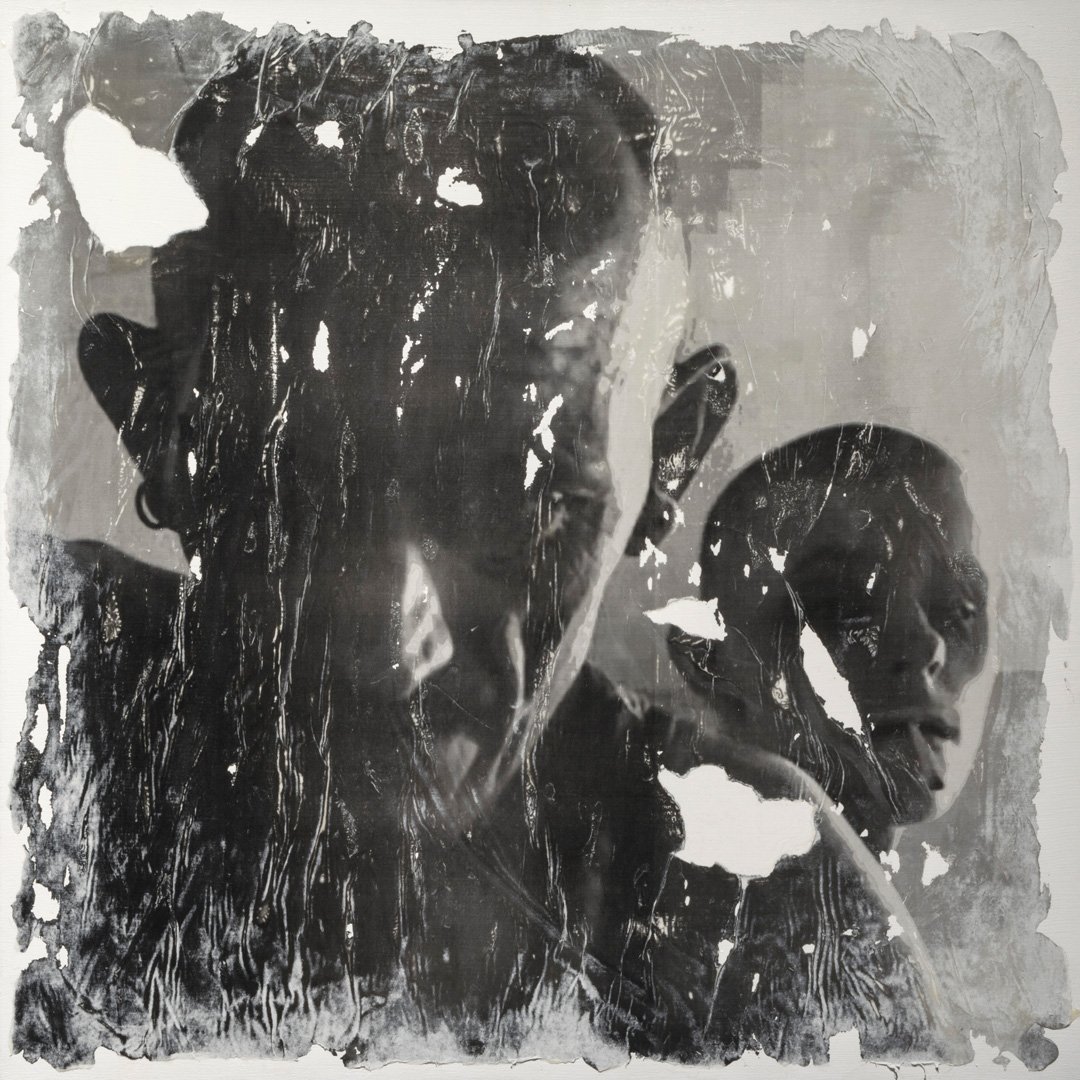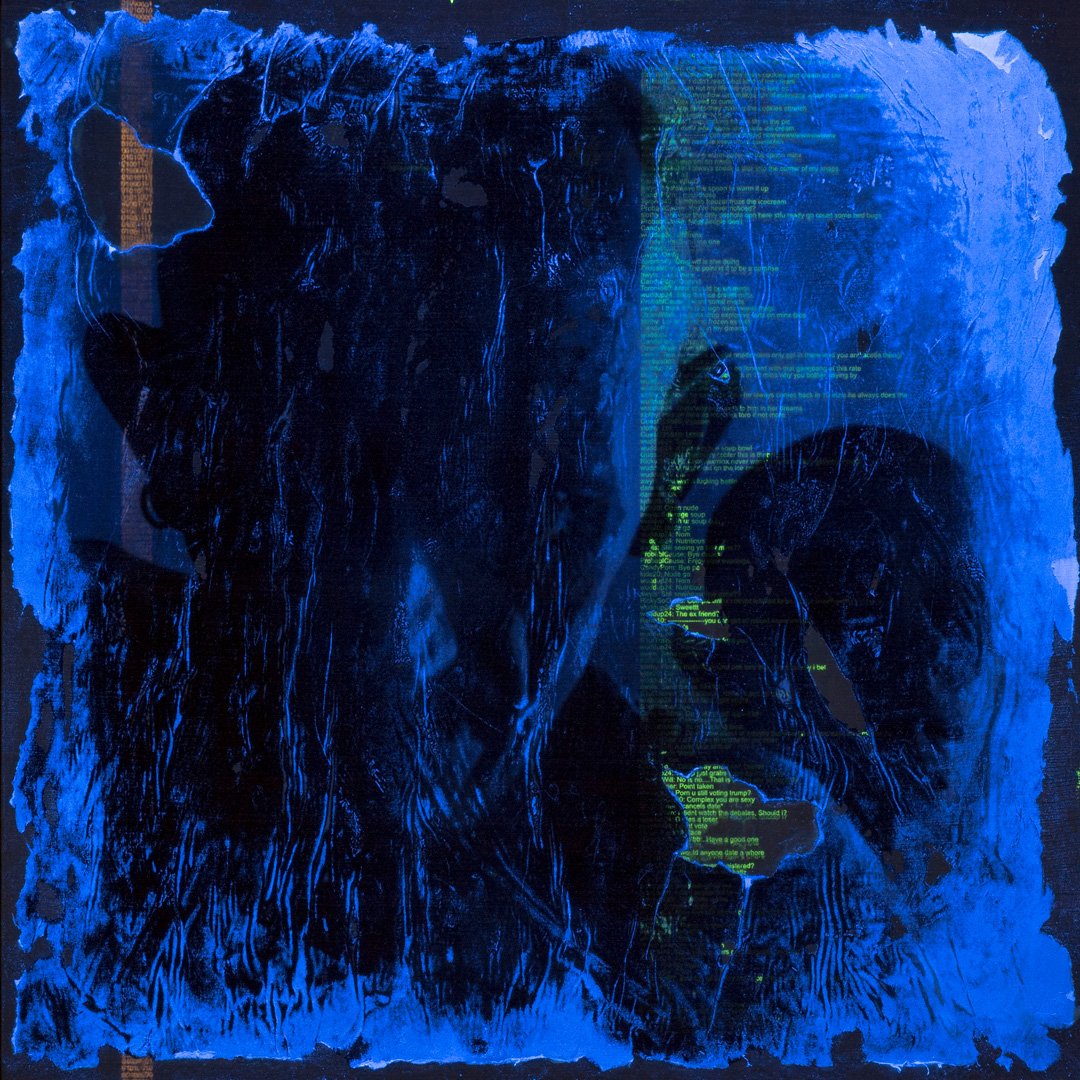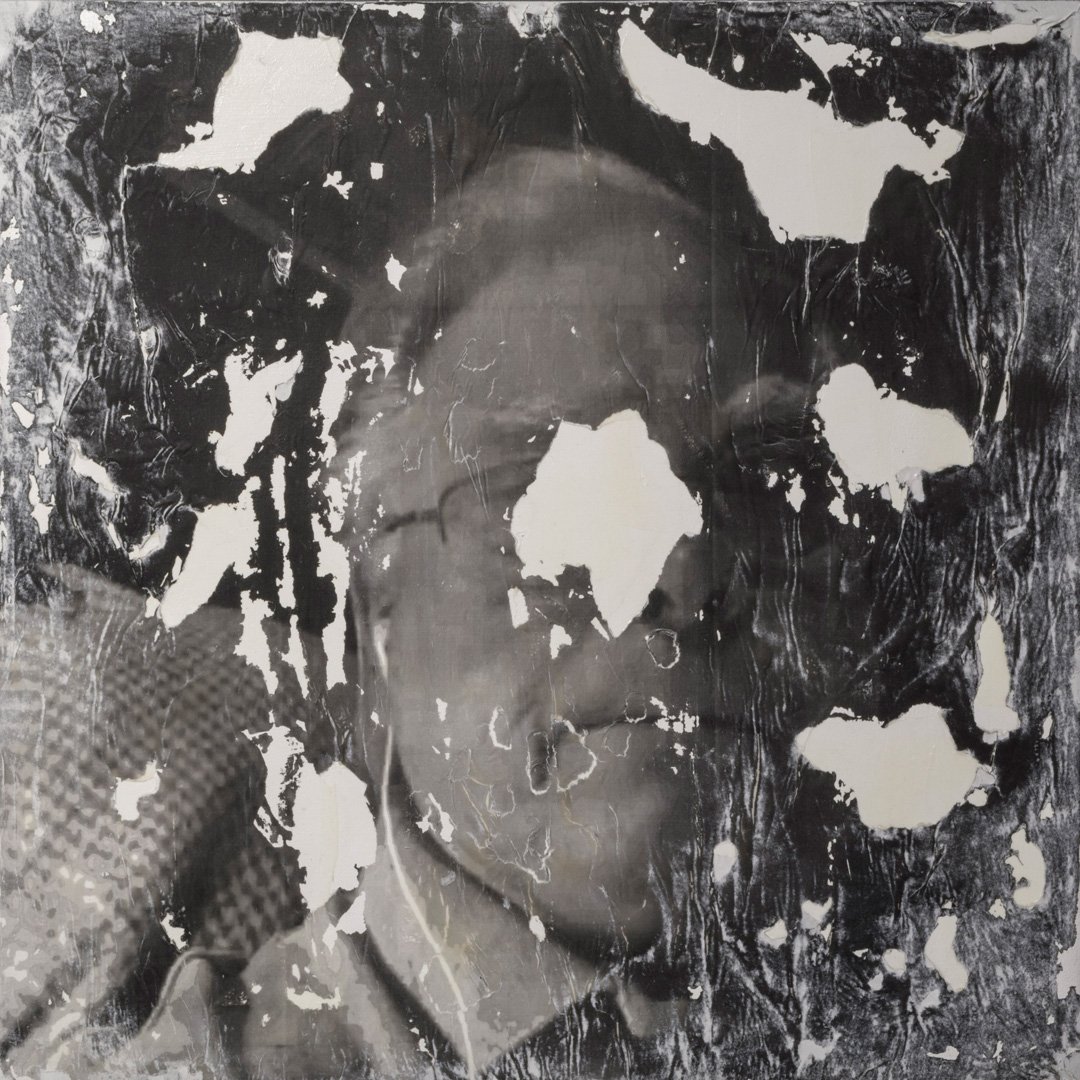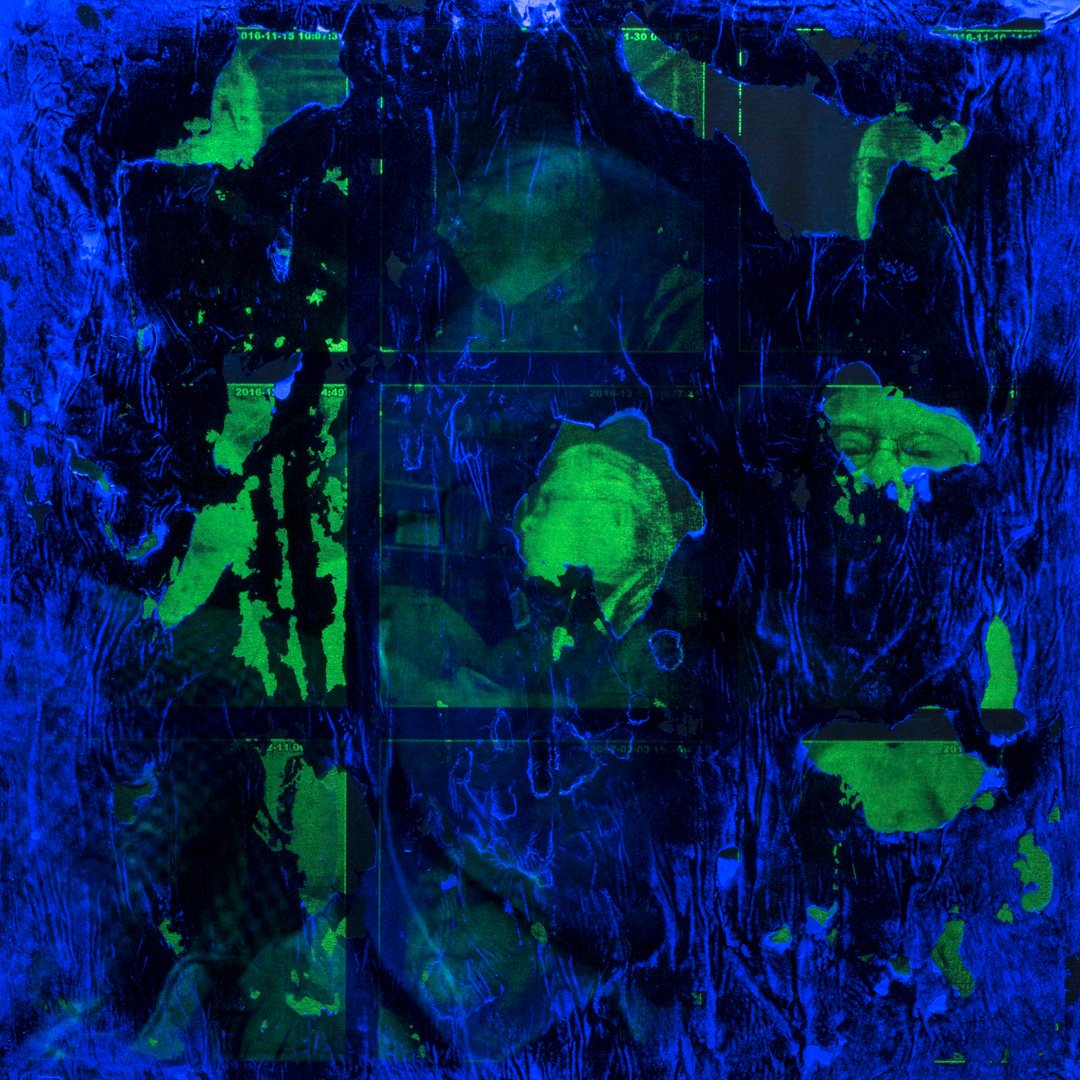How to clear your browser history
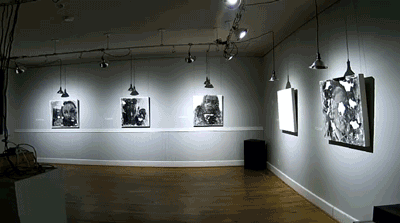
How to Clear Your Browser History aims to create an immersive experience that provokes thought and discomfort, mirroring the unease associated with constant observation. By intertwining visual, auditory, and interactive elements, the project underscores the need for critical conversations about the ethical implications of surveillance and its impact on individual freedoms.
the Paintings
These paintings become a compelling canvas that scrutinizes the intricacies of modern surveillance and digital identity. Capturing unsuspecting individuals from public chatrooms, they mirror the intrusive practices of government intelligence agencies like the NSA and GCHQ. Silkscreened chat transcripts, rendered in phosphorescent pigments, remain concealed until exposed to UV light, inviting viewers into an interactive exploration. These portraits, intertwined with hidden text, evoke the dual nature of online existence and surveillance, challenging preconceptions about privacy. The paintings offer a powerful commentary on the transient digital footprints we leave behind, beckoning viewers to reflect on the implications of surveillance, online identity, and the boundaries of privacy in our interconnected world.
the TECHNOLOGY

The lighting system serves a dual function of revelation and engagement. It plays a pivotal role in uncovering concealed narratives and transforming the viewer’s experience. Using UV spectrum lighting controlled by an Arduino, the system unveils hidden silkscreened chat transcripts that critique government intelligence agencies’ surveillance practices. These transcripts, rendered in phosphorescent pigments, are initially invisible under standard lighting conditions, reflecting the clandestine nature of online surveillance. The alternation between regular spectrum lights and UV lighting adds a temporal and interactive dimension, prompting viewers to actively engage with the artwork, mirroring the transient nature of digital interactions and surveillance. The lighting system becomes a bridge between the seen and unseen, encouraging contemplation on issues of privacy, surveillance, and digital identity within our interconnected world.
Transceiver #1 stands as a pivotal piece within the immersive tapestry of How to Clear Your Browser History. Composed of electronic components mounted on a wooden painting panel, this artwork weaves together a haunting narrative that engages the viewer on multiple levels.
An LCD panel that serves as the window into a distorted digital realm. It emanates a video composition that melds disparate sources—livestreams, chatrooms, and glimpses of law enforcement and military footage—melding into an abstract and disorienting visual experience.
Unseen to the viewer, a discreet camera awaits, triggered by facial recognition software. As the audience is captivated by the disconcerting video, their image is surreptitiously captured.
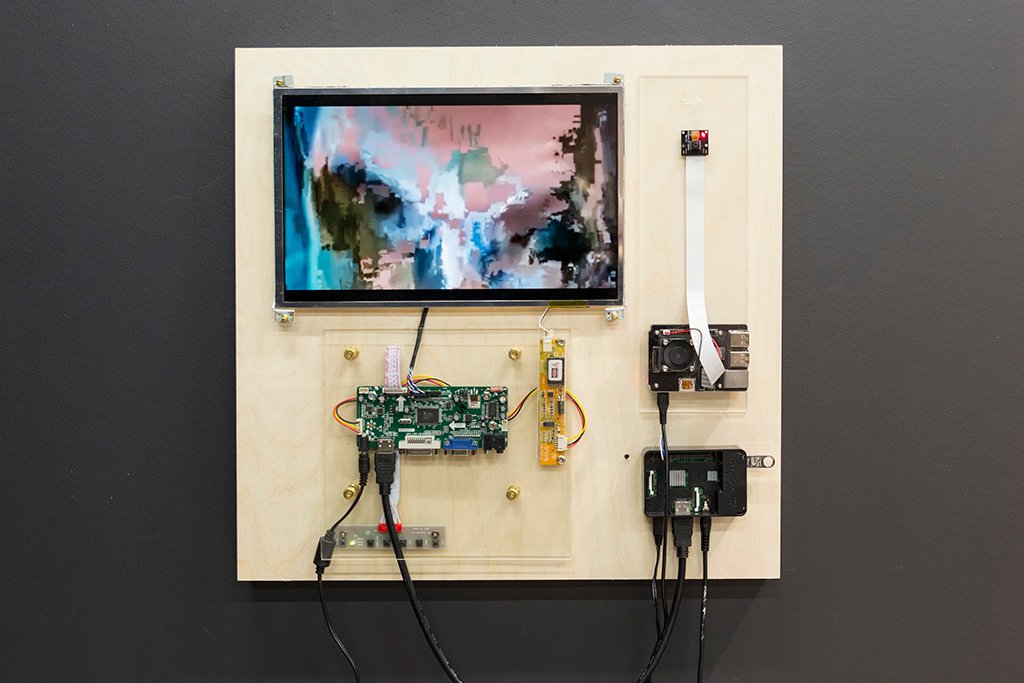
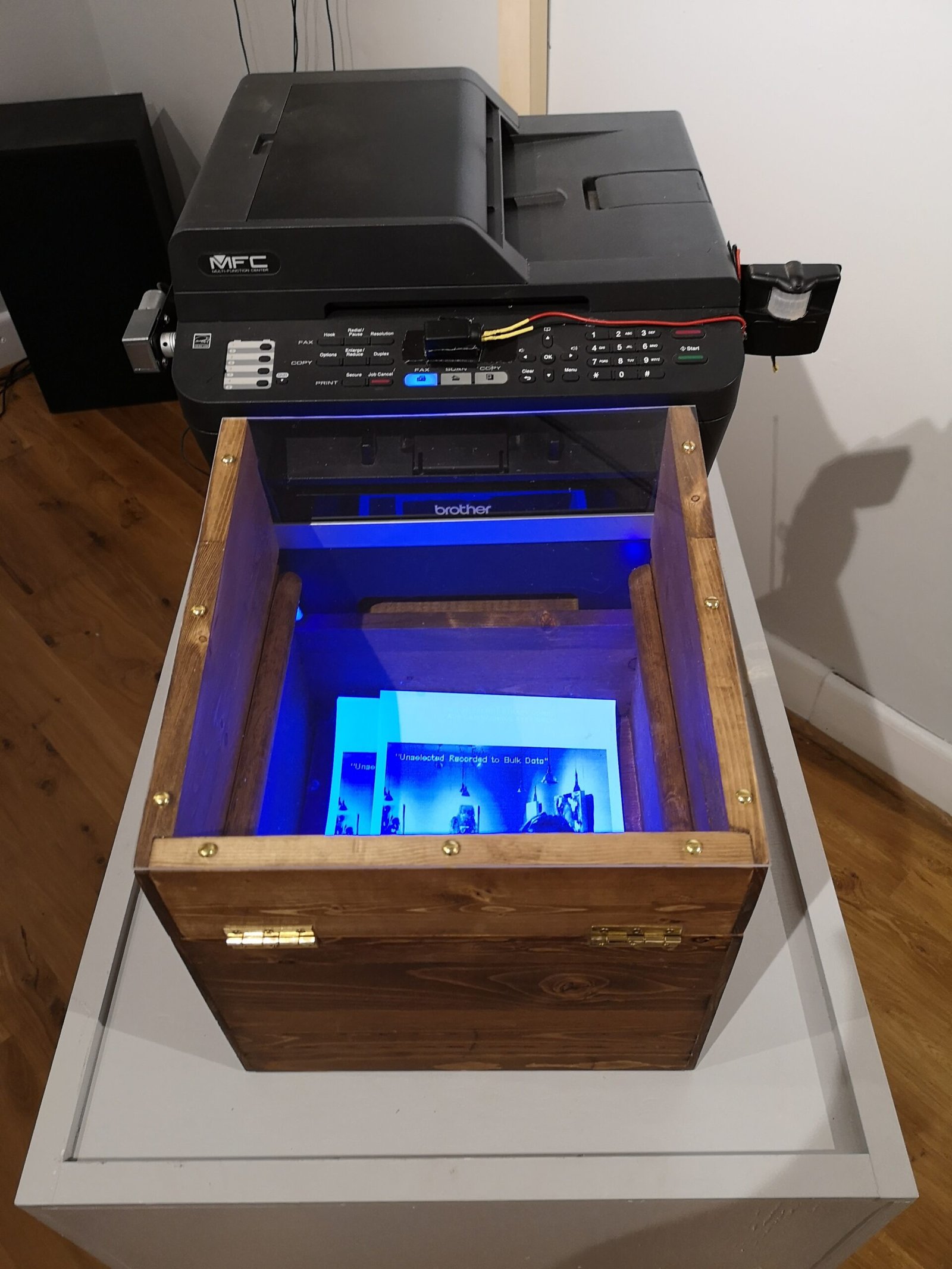
The captured images embark on a clandestine journey to Receiver #1, another modified marvel in this narrative. Here, the captured faces are transmuted into tangible form, printed on paper, and ejected into a locked box.
The locked box emerges as a recurrent motif—a tantalizing enigma that beckons the audience to ponder the nature of their own digital existence. The printed images are viewable but untouchable, echoing the ephemeral yet indelible mark we leave in our digital interactions.
Other electronic panels, housing a fusion of analogue and digital recording devices, capture an array of sensory inputs, infusing the space with an eerie ambiance that echoes the omnipresence of surveillance in our interconnected world. Outdated mobile devices, repurposed, offer delayed feeds of the gallery, casting a surreal atmosphere that challenges the boundaries between reality and artifice. As viewers navigate this enigmatic landscape, they grapple with the sensation of being under constant surveillance. Further heightening the atmosphere is the meticulously crafted audio, featuring a blend of unsettling elements, including a partial reading of George Orwell’s “1984,” text-to-speech renditions of targeted keywords from recorded chatrooms, and a persistent, foreboding drone. Together, these technological components immerse viewers in a thought-provoking contemplation of the erosion of privacy, the ever-watchful eye of surveillance, and the intricate tapestry of digital identity in our modern age.






